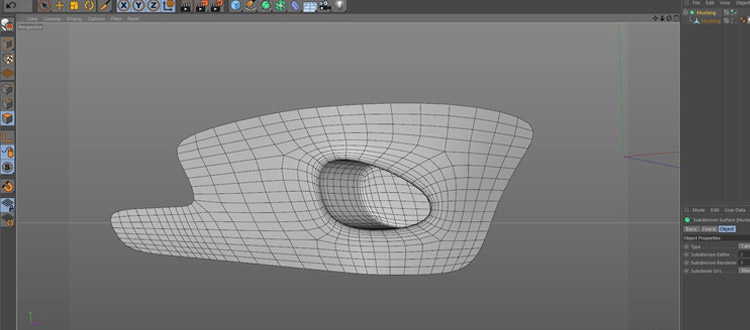
Best 3D Modeling & Digital Sculpting Books
The 3D modeling process is not easy but it’s crucial to every video game & animated film. There’s a huge industry of modelers who create digital models which appear as visual representations of a three dimensional object.
These models range from humans to creatures, vehicles, props, houses, pretty much anything you see on the screen.
Learning 3D modeling on your own can be a real challenge but there are tons of books to help you along. And in this guide I’ve curated my top picks for the best 3D modeling books regardless of skill level.
Digital Modeling


The ever-popular Digital Modeling book by William Vaughan is like no other 3D modeling book out there. It covers a lot of the fundamentals while touching upon production environments for 3D modelers.
You’ll learn what makes a great 3D model and what you’d need to learn to work on a professional team. This book does not assume any prior knowledge with specific software and it offers advice on all the best programs: Maya, 3ds Max, ZBrush, and many others.
Over 430 pages you’ll learn everything you need to know about digital modeling. Naturally this includes some technical ideas like polygon-count and handling hard/organic surfaces. But you’ll also learn how to plan each project and organize your ideas clearly before starting.
This book is a nice read for beginners and intermediate modelers since it delves into some real complex territory.
Plus as a bonus this book comes with a free DVD packed with 6 hours of extra footage on LightWave and 3ds Max modeling.
3D Modeling For Beginners


This is the newest book in my list but it’s also a very relevant guide for older software.
3D Modeling For Beginners spans 240 pages with a dozen chapters on all the foundations of 3D digital sculpting. The early chapters explain the basics of this process and why entertainment artists should learn modeling.
But as you progress into the exercises you’ll cover a lot of ground with different organic objects, characters, environments, and subjects like low/high poly count.
However it is recommended that you know your way around some basic 3D software before picking up this book. A lot of digital artists prefer Maya but it’s not a staple.
These lessons are software-agnostic so you can apply all these techniques in any program so long as you know your way around it.
Anatomy for 3D Artists


You may not think digital modelers need to know a lot of human anatomy but it is a huge topic for sculpting & modeling the figure accurately.
Anatomy for 3D Artists teaches the human figure from a sculptor’s point of view. The goal of a modeler is to create realistic renderings and you need to understand anatomy for this to work.
You’ll start with 2D reference guides to the human body and then move onto more detailed 3D renderings. Professional artists like Chris Legaspi and Mario Anger offer advice and techniques for anyone working through these lessons who want to learn anatomy fast.
This book is one part reference guide, one part instruction series, and one part masterclass with advanced projects you can do at home.
Definitely a brilliant resource for any aspiring 3D modelers who don’t know much(or any) anatomy.
3ds Max Modeling for Games


3ds Max Modeling for Games offers a complete guide into the world of modeling for video games.
Author Andrew Gahan has worked in the game industry for over two decades and he’s a true pro in the 3ds Max software.
This book is absolutely massive with 480 pages jam-packed full of tutorials and practical exercises for all skill levels. Even if you’ve never used 3ds Max in your life these lessons should help you find your foundation.
You’ll learn about different modeling techniques for subjects like characters, environments, and objects. Plus you’ll learn about the workflow of mapping and texturing your models from scratch.
The very last chapter focuses more on the video game industry and how beginners can break in by developing the proper skillset.
Amazing book for anyone serious about modeling and getting paid to work on video games.
Blender Master Class


Another insanely popular 3D modeling program is Blender. This program’s different than most because it’s released as a free open source program that anyone can download, no price tag.
This makes it a fantastic choice for newcomers who just want to learn the ropes of 3D modeling without spending any money.
Blender Master Class by Ben Simonds takes you on a wild journey through this program from start to finish. Note this is not specifically a modeling book, but rather a detailed introductory guide to the Blender software.
It does have a few sections on modeling along with other sections on texturing, rendering, rigging, and even animating your creations.
If you’re an open source advocate then you’ll want to learn the Blender software and this is the only book you need to get started.
Learning Blender


Another book I recommend for open source modeling is Learning Blender written by Oliver Villar.
This also focuses on the Blender software and the book is currently in its 2nd edition with new updates on the latest release of Blender v2.7x. This is, once again, not strictly a 3D modeling book.
However it does walk you through everything you’ll need to know about the program which naturally includes modeling. Through hands-on exercises you’ll pick up techniques for shading, rigging, rendering, compositing, and modeling all from Blender.
Inside you’ll even find links for tutorial files you can download and compare with your work.
I would only recommend this for the Blender novice who wants to learn the software before diving into deep 3D modeling. It’s an excellent instructional guide but a tad light on the modeling topics.
ZBrush Character Sculpting


You can do a lot with ZBrush because it goes beyond just simple 3D renders. A lot of concept artists use ZBrush since it’s such a powerful program for both 2D and 3D work(although mostly 3D).
ZBrush Character Sculpting packs loads of tutorials and walkthroughs into 240 pages. This is not a beginner’s guide and it expects that you already know the basics of ZBrush before starting. Check out my ZBrush book list if you’re brand new to the program.
But once you do have some skills you’ll want to put those skills into real-world exercises. And that’s exactly what you’ll learn in this book with lessons from a few pro artists explaining sculpting techniques for character design.
Each lesson teaches you how to do something new, then shows you how to put this into action. After working through this book you should have a much stronger idea of how to use ZBrush for modeling.
Sculpting from the Imagination


A good majority of 3D modelers work from 2D concept art. This means you’ll rarely be the person designing a character and creating the model in a 3D program.
But if you have both skillsets this leads to something called job security. Definitely something valuable in this industry!
Sculpting from the Imagination reads more like a compilation of advice from artists and modelers around the world. 50 different artists showcase their work and offer solutions to common problems you’ll face while modeling in ZBrush.
Yes, this is primarily a ZBrush book. However the concepts apply to pretty much any program.
You’ll find tips on designing characters, creatures, weapons, props, vehicles, you name it. And while this isn’t a strict how-to book it does offer a lot for the practicing modeler hoping to bring their skills up to a professional level.
Digital Sculpting with Mudbox


Autodesk owns a bunch of 3D modeling software and one of their more specific programs is Mudbox. This can work closely with Maya since the majority of Maya users are technical designers, but Mudbox users are mostly artists and sculptors.
That’s why Digital Sculpting with Mudbox is such a valuable book. It not only teaches 3D modeling and sculpting from the very beginning, but it also teaches this in Autodesk’s proprietary modeling software.
You’ll learn all sorts of techniques to work with 3D painting and how to manipulate your digital objects like clay. The goal is to create lifelike models that feel incredibly realistic. But this doesn’t happen in a vacuum.
If you have zero experience with modeling and have a copy of Mudbox then you can learn all the fundamentals with this book.
It’s the definitive go-to guide for all things modeling and it can take any newbie up to a competent digital sculptor quickly.
How to Cheat in 3ds Max 2014


I’ve tacked this book onto the list only because it has so much great information for modelers. But it only applies if you’re using 3ds Max.
How to Cheat in 3ds Max 2014 totals 300 pages of advanced tips and workflows you can apply to your 3ds Max modeling projects. The author Michael McCarthy is an experienced artist & modeler with years of working with 3D.
While this isn’t strictly a modeling book, it does cover a lot of topics that modelers should know about. Especially if 3ds Max is your go-to software for character/creature design.
Many tips do relate to modeling and can help speed up your workflow. But you’ll also find cool tricks for adding special effects, working with particles, realistic physics, Mass FX, and other similar features.
Really cool book for 3ds Max users but not super helpful for anyone else.
AutoCAD 2017: 3D Modeling


Another program you might want to learn is AutoCAD, also owned by the folks at Autodesk. There’s a lot of great stuff on this program but this book is the most recent and most detailed.
AutoCAD 2017 3D Modeling takes you through step-by-step exercises on creating 3D models from scratch. You’ll learn about lighting, materials, rendering, texturing, and even 3D printing which is pretty cool.
Just note that people use AutoCAD mostly for things outside of entertainment art. In fact, this is one program that doesn’t get used much compared to Maya or 3ds Max.
But if you’re just trying to learn modeling with whatever you have then AutoCAD is certainly doable. Most of the fundamentals carry over into other programs so any modeling techniques you pick up from this book will help you out down the road.
Just recognize that AutoCAD is mostly used by architects and product designers, so this isn’t technically the best program for getting started. If you’re brand new with no experience then pick up Maya, Blender, or a broader alternative like ZBrush.
Either way I hope you enjoyed this list! I know 3D modeling is slightly different in every program so there is no absolute best book here.
Instead you have to know what you want to learn and what type of program(s) you feel comfortable using. Then you can whittle down this collection to the best titles that’ll help you master the 3D modeling process.












